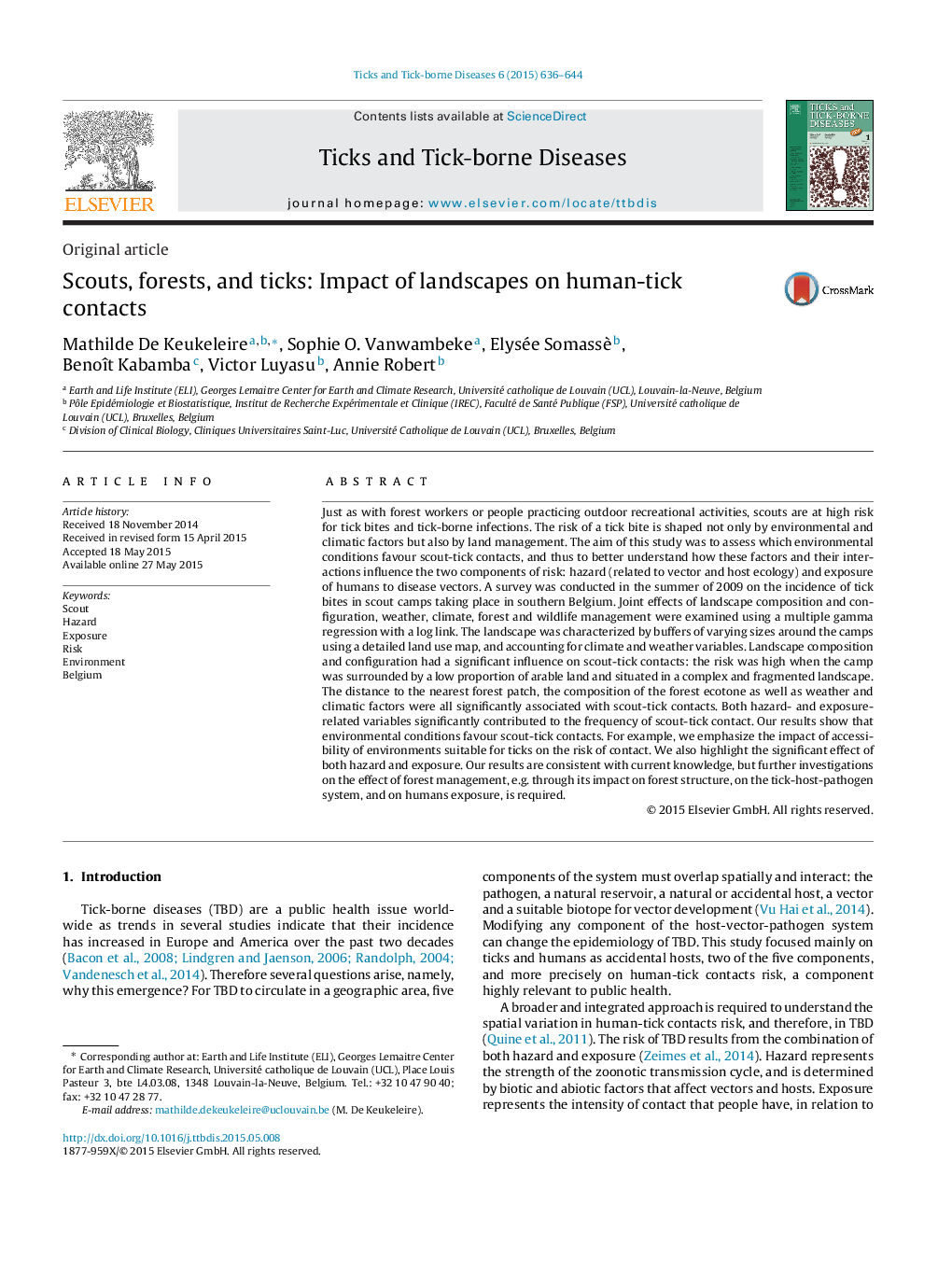| کد مقاله | کد نشریه | سال انتشار | مقاله انگلیسی | نسخه تمام متن |
|---|---|---|---|---|
| 5807255 | 1113116 | 2015 | 9 صفحه PDF | دانلود رایگان |
Just as with forest workers or people practicing outdoor recreational activities, scouts are at high risk for tick bites and tick-borne infections. The risk of a tick bite is shaped not only by environmental and climatic factors but also by land management. The aim of this study was to assess which environmental conditions favour scout-tick contacts, and thus to better understand how these factors and their interactions influence the two components of risk: hazard (related to vector and host ecology) and exposure of humans to disease vectors. A survey was conducted in the summer of 2009 on the incidence of tick bites in scout camps taking place in southern Belgium. Joint effects of landscape composition and configuration, weather, climate, forest and wildlife management were examined using a multiple gamma regression with a log link. The landscape was characterized by buffers of varying sizes around the camps using a detailed land use map, and accounting for climate and weather variables. Landscape composition and configuration had a significant influence on scout-tick contacts: the risk was high when the camp was surrounded by a low proportion of arable land and situated in a complex and fragmented landscape. The distance to the nearest forest patch, the composition of the forest ecotone as well as weather and climatic factors were all significantly associated with scout-tick contacts. Both hazard- and exposure-related variables significantly contributed to the frequency of scout-tick contact. Our results show that environmental conditions favour scout-tick contacts. For example, we emphasize the impact of accessibility of environments suitable for ticks on the risk of contact. We also highlight the significant effect of both hazard and exposure. Our results are consistent with current knowledge, but further investigations on the effect of forest management, e.g. through its impact on forest structure, on the tick-host-pathogen system, and on humans exposure, is required.
Journal: Ticks and Tick-borne Diseases - Volume 6, Issue 5, July 2015, Pages 636-644
